Nobody likes to be tricked, but cool mind tricks are another matter altogether. For one, you don’t feel that someone had gotten the better of you. And if you don’t get it, nobody else would know, right? What you are about to experience are some of our favorite mind tricks, and an explanation of how they work (well, we try). We hope we don’t ruin the suspense for you.
10. Nature’s Trick
 Have you ever noticed that the moon looks bigger when it is kissing the horizon than when it is higher up in the night sky? The next time the moon is full and bright, maybe you can find the time to observe this phenomenon. The moon’s size is not actually bigger. You eyes are fooling you because it is comparing the moon to the other objects that you see (houses, trees, and people). Now that you know it’s just nature playing tricks on you, it won’t make a difference really. You’ll keep seeing the moon as it appears to be, and not as it really is.
Have you ever noticed that the moon looks bigger when it is kissing the horizon than when it is higher up in the night sky? The next time the moon is full and bright, maybe you can find the time to observe this phenomenon. The moon’s size is not actually bigger. You eyes are fooling you because it is comparing the moon to the other objects that you see (houses, trees, and people). Now that you know it’s just nature playing tricks on you, it won’t make a difference really. You’ll keep seeing the moon as it appears to be, and not as it really is.
9. Left or Right Brain?
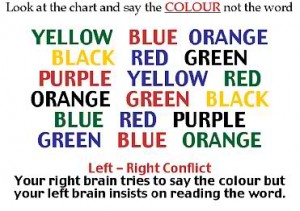 That’s just the more popular explanation. The thing is, the brain’s workings are far from a mystery solved. The fact is, despite earlier beliefs on a strict delineation between left and right brain function more recent studies, the results of which are not yet in neurology textbooks, give the right-left brain theory less gravity. It really is more about both sides of the brain are always working to complement each other. Still, knowing that does not make you gain more points on that particular challenge, does it?
That’s just the more popular explanation. The thing is, the brain’s workings are far from a mystery solved. The fact is, despite earlier beliefs on a strict delineation between left and right brain function more recent studies, the results of which are not yet in neurology textbooks, give the right-left brain theory less gravity. It really is more about both sides of the brain are always working to complement each other. Still, knowing that does not make you gain more points on that particular challenge, does it?
8. Optical illusions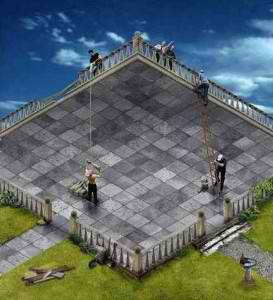
Every single optical illusion devised is designed to distort the senses. The most common and most popular illusions are visual or optical illusion. This is because vision is the primary sense we use in daily life. Optical illusions do not just involve the sense of vision but how the visual and sensory cortices of the brain interpret what we see. Interpretation is largely dependent on human experience. We generally share common experiences despite cultural and geographical differences and that is why optical illusions are shared by many people.
7. The Spinning Girl
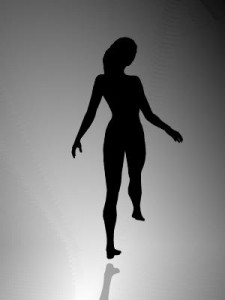
Whether you see it spinning to the left or the right is not an indication of left or right brain dominance. Some people can will this image to spin in a direction opposite its initial direction. That is the challenge actually – changing the direction of spring. But the general point of this illusion is that reality is subjective to a degree. This figure is just one of the most popular forms used in what is dubbed, “The Spinning Silhouette Illusion.” Human beings looking at this image see a 3D spinning figure when in actuality it is only two-dimensional. Again, this is due to the way that our brain processes information.
6. Truth is Stranger
 Does this look a bit like the scene from “Inception” when city blocks folded in on themselves? This is not really an illusion, however. It’s actually a strangely-constructed truck made to look like an illusion. Sometimes, truth really is stranger than fiction.
Does this look a bit like the scene from “Inception” when city blocks folded in on themselves? This is not really an illusion, however. It’s actually a strangely-constructed truck made to look like an illusion. Sometimes, truth really is stranger than fiction.
5. 3D Illusions
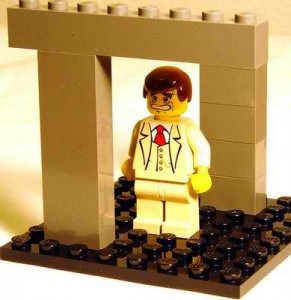 What’s great about all these illusions and mind tricks is that they challenge us to look at things differently. They invite us to explore other avenues and make us realize that there is not just one way of seeing something. And this makes us appreciate the senses that we have been endowed. This Lego man seems comfortable enough and we are the ones that are confounded by the seemingly impossible situation he is in. Figuring out how what we see is possible just might enrich our experience of daily life a few notches higher.
What’s great about all these illusions and mind tricks is that they challenge us to look at things differently. They invite us to explore other avenues and make us realize that there is not just one way of seeing something. And this makes us appreciate the senses that we have been endowed. This Lego man seems comfortable enough and we are the ones that are confounded by the seemingly impossible situation he is in. Figuring out how what we see is possible just might enrich our experience of daily life a few notches higher.
4. Do you see what I see?
 This image is playing with our head alright, but in a good way. Advertising has even grabbed onto the potential of optical illusions just to pique our interest.
This image is playing with our head alright, but in a good way. Advertising has even grabbed onto the potential of optical illusions just to pique our interest.
3. Shake your head
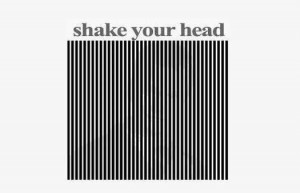 Don’t worry; this one is as safe as can be. All you have to do is look directly at the cornucopia of straight lines and then shake your head as you do so. What do you see? And once you see it, can you “unsee” it again?
Don’t worry; this one is as safe as can be. All you have to do is look directly at the cornucopia of straight lines and then shake your head as you do so. What do you see? And once you see it, can you “unsee” it again?
2. It’s All About Depth Perception
 We are endowed with the ability to see the world in three dimensions because of a neural function called depth perception. We perceive the world as such due to the presence of depth cues in the world we live in. When depth cues are used properly on a two dimensional medium, images may be rendered in 3D. This how artists achieve 3D effect on their paintings, and a smart use of monocular and binocular cues are widely used in movies that employ special effects.
We are endowed with the ability to see the world in three dimensions because of a neural function called depth perception. We perceive the world as such due to the presence of depth cues in the world we live in. When depth cues are used properly on a two dimensional medium, images may be rendered in 3D. This how artists achieve 3D effect on their paintings, and a smart use of monocular and binocular cues are widely used in movies that employ special effects.
1. The Stereogram
 Stereograms are essentially pictures with hidden images within them. They are made using a meticulous and very tedious process that slices the image in hundreds of layers. Some people see the hidden images and some people don’t. Seeing the interesting hidden surprises on stereograms require some practice.
Stereograms are essentially pictures with hidden images within them. They are made using a meticulous and very tedious process that slices the image in hundreds of layers. Some people see the hidden images and some people don’t. Seeing the interesting hidden surprises on stereograms require some practice.
You’ve just been privy to a few cool mind tricks. Did you find them interesting? Did you get frustrated in not being able to fully understand or figure out how some of them work? The reason why they are mind tricks is that they are designed to take advantage of certain peculiarities and proclivities of human sensation and perception. There’s no need to feel as if your IQ points dropped down a few notches.
Leave a Reply